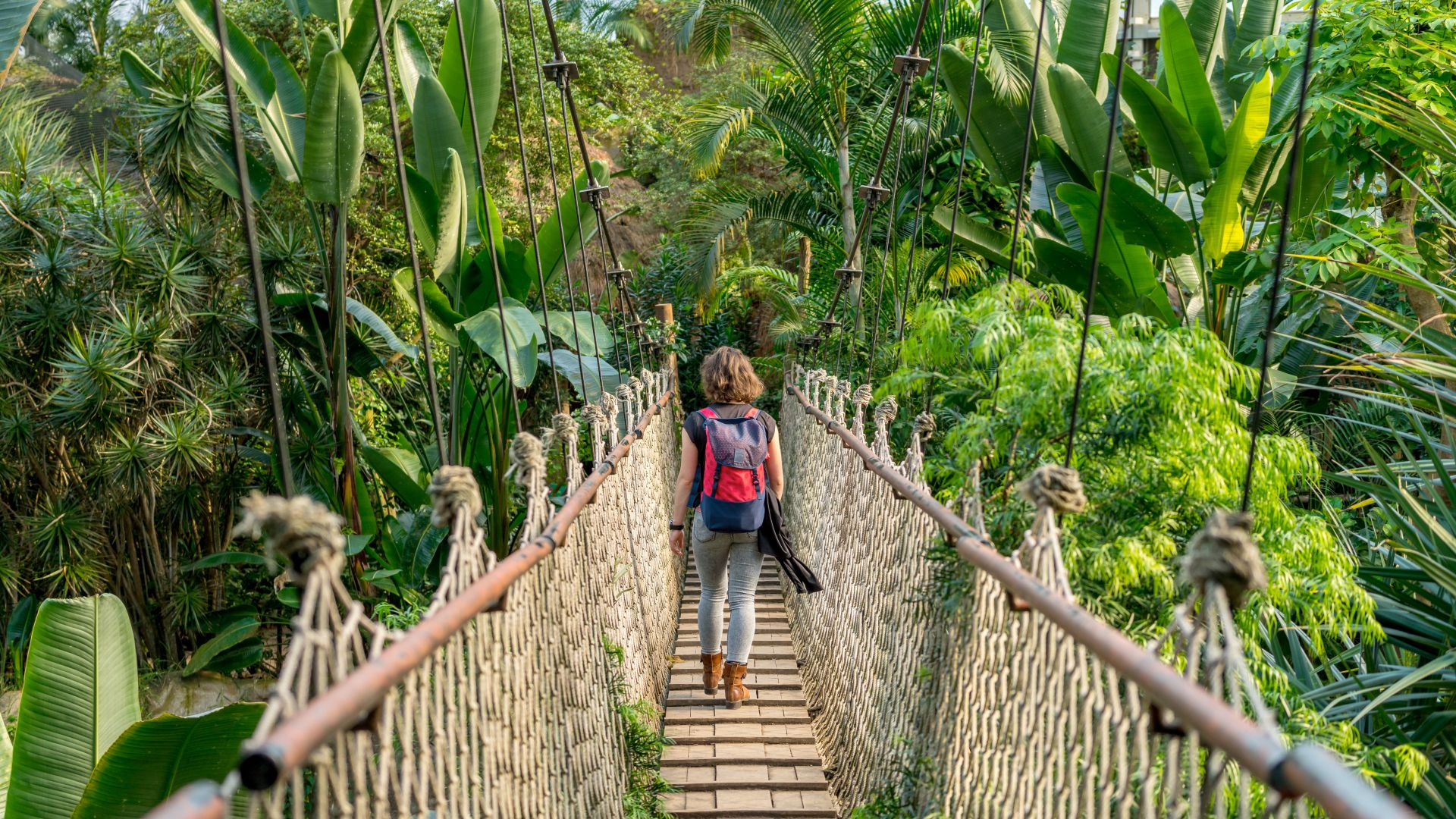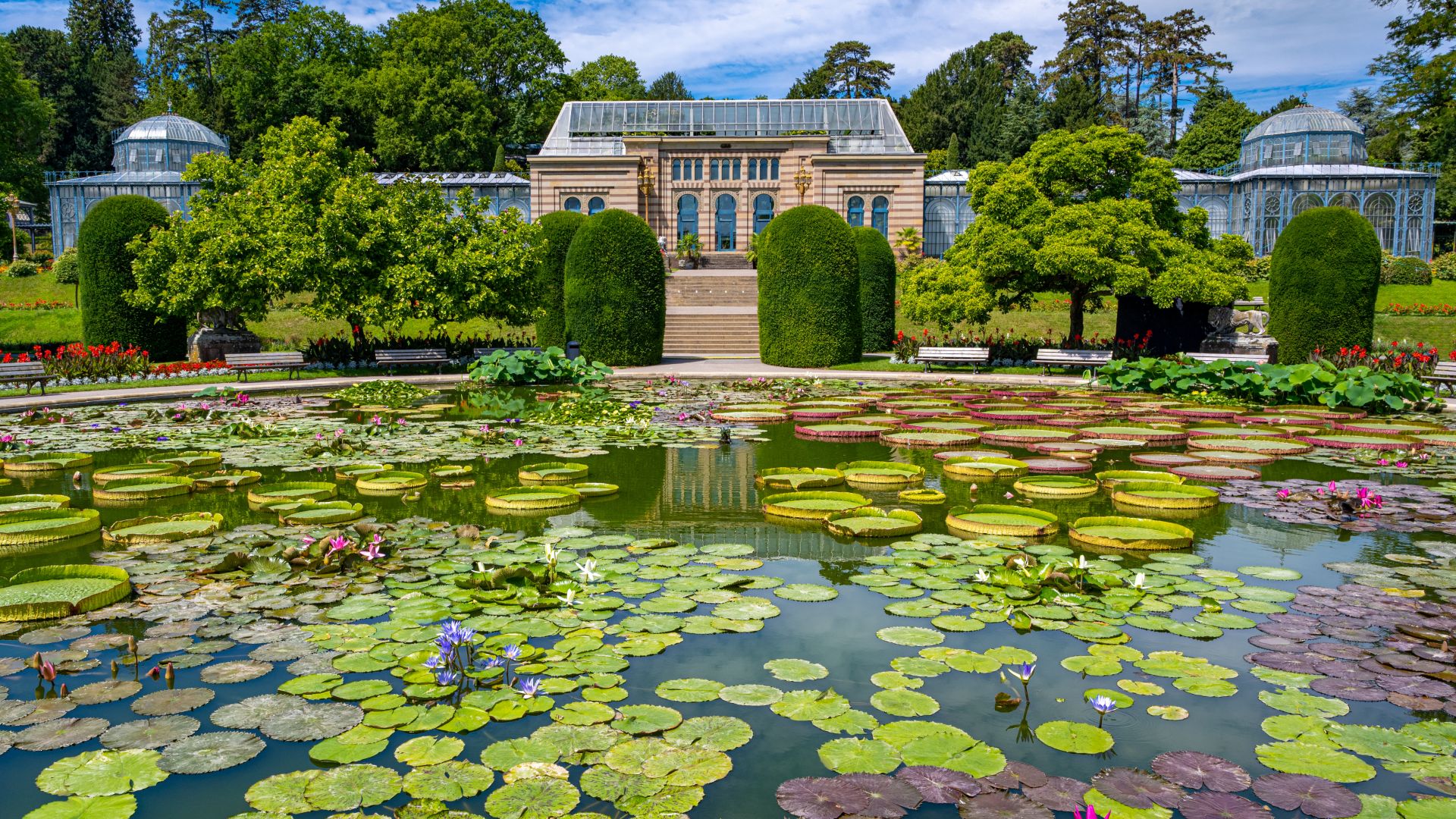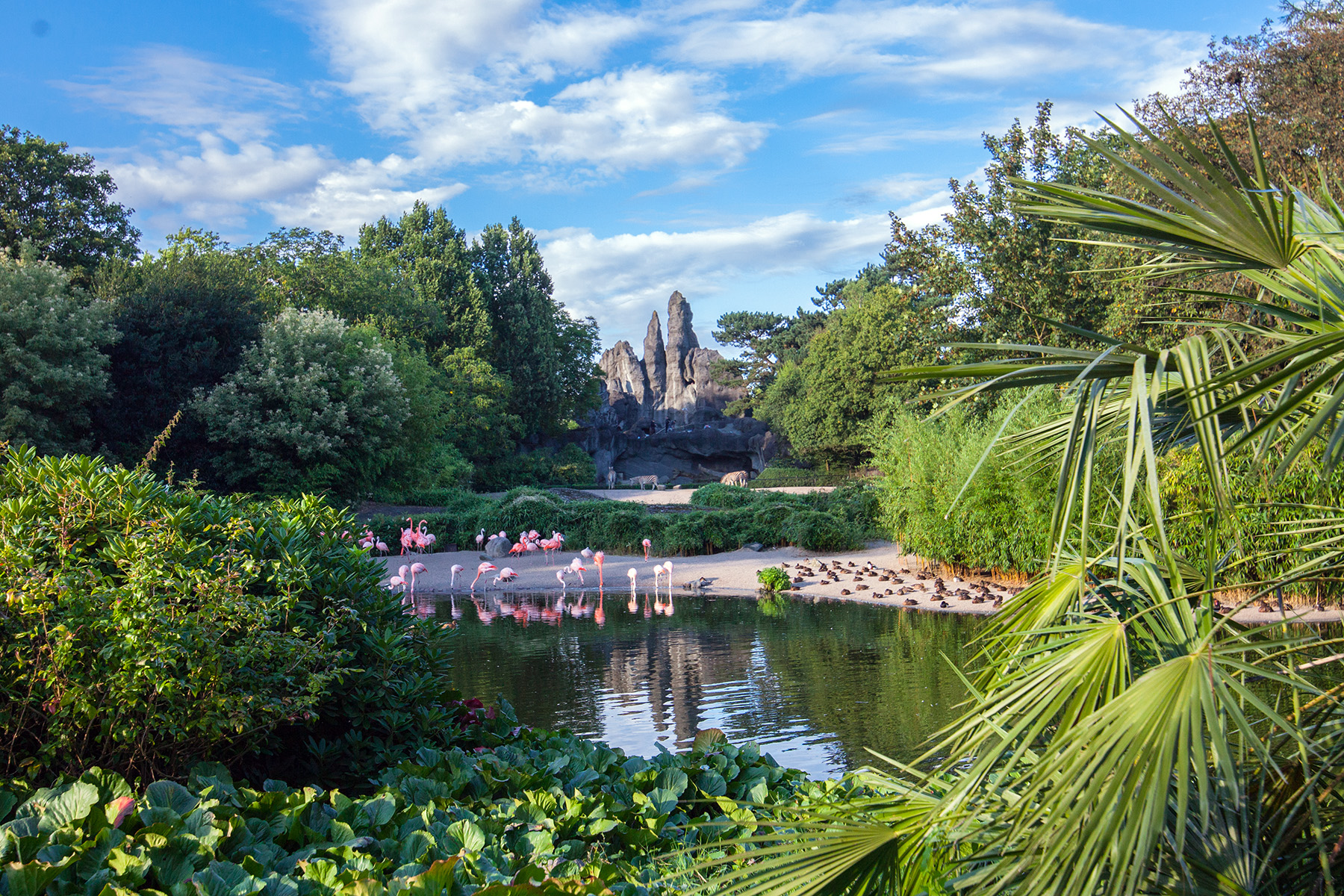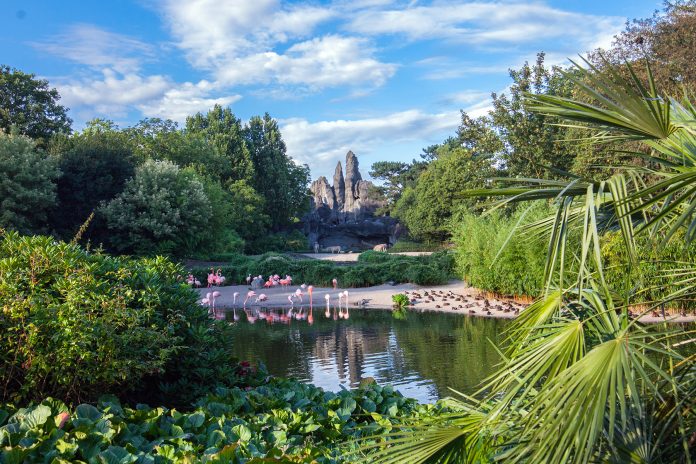[ad_1]
Rare animals, impressive enclosures and close encounters: some German zoos are so attractive that they are reason enough for a trip. There are also many “encores” beyond the zoo gates…
Leipzig: Between the Zoo and the War Memorial

Leipzig: Suspension bridge in the tropical forest of the Leipzig Zoo
©Adobe Stock (DZiegler)
Why is the 27-hectare “zoo of the future” always on stage? On the other hand, he enjoys a high TV presence with a popular documentary soap. On the other hand, sustainable agriculture and a unique visitor experience are cleverly combined. Visitors can see this in the large monkey center “Pongoland”, which is unique in the world. “Gondwanaland”, Germany’s largest tropical rainforest, is home to 200 rare animals and 500 plant species. A snow leopard and an elephant temple with an underwater view of bathing pachyderms are also rare. In short: One day is not enough for some places in “Leibzsch”, such as the pleasant student town called Saxon. Of course, take more time for the opera, the Old Town Hall, the beautiful Mädler Passage including Goethe’s “Auerbach’s Cellar” and the Thomaskirche, famous for JS Bach and St. Thomas Choir, as well as the Völkerschlachtdenkmal outside…
Stuttgart: animals, flowers, buildings

Stuttgart: Wilhelma Zoological-Botanical Garden
©Adobe Stock (karlo54)
Wilhelma is one of the most visited zoos in Germany. Originally designed as a palace complex by King Wilhelm I of Württemberg, the site is not only a world-class combination of a zoo (with around 1,200 species), a botanical garden (with about 8,500 species of plants) and a historical garden (with about 1,200 species). many Moorish buildings). But the highlights are the animals and their sometimes fascinating habitats, especially the great ape sanctuary, including a hand-raised gorilla kindergarten, a bear sanctuary and exotic animals, and an aquarium. Another eye-catcher is the Amazon House, which features tropical plants and animals. The vegetation in the long garden of the nearby castle is a different reality, but at least you can reach the city center, including the state theater, the main train station and the New Palace, all green. In the square in front of it, a 30-meter monument commemorates – well – King Wilhelm I of Württemberg. So the circle closes.
Hamburg: a pioneer of modern gardens

Africa here at the Hagenbeck Zoo
©Hagenbeck (Lutz Schnier)
Like the aquarium’s tropical neighbor, the beautifully decorated Hagenbeck Zoo, which is still family-owned today, is a Hamburg institution. Although it was founded earlier, it made headlines when it opened in 1907 in its current location in the district of Stellingen – as the world’s first barrier-free zoo. Carl Hagenbeck was a pioneer of modern zoos, and in this respect, he was way ahead of his time. After that the zoo was repeatedly in the media. As the background of the TV series, the home of the famous walrus Antje (unforgettable mascot of North German Radio) or the world’s oldest Sumatran orangutan, which was honored with an entry in the Guinness Book in 2021. Location of the Arctic Ocean was opened in 2012. On the 750-meter long walkway, fur seals, polar bears and penguins can be seen living in a modern, natural environment. The XS version of the Miniatur Wunderland zoo in Speicherstadt (UNESCO World Heritage Site) near the Elbphilharmonie is worth seeing. Of course, “Hagenbeck” is also honored here…
Hanover: Zambezi or Leine? Mom!

Hanover: A child sees a polar bear at a zoo
©Lookphotos (Lukas Spörl / Jalag)
Hanover Zoo, which opened in 1865, has an interesting past, but it is not sleepy. On the contrary: it was one of the leading addresses in the world when it comes to appealing performances. Pelicans and Bennett’s kangaroos can be seen up close because of the enclosures. The highlight of the day at the zoo is the Zambezi safari. Visitors ride flamingos and giraffes on boats. In the gorilla mountain you can see charming monkeys in the mist. Alaska’s largest river, Wolf Gorge and bay attracts penguins, seals and polar bears. Ducks often flock to the shores of the Maschsee, the city’s top meeting place for (day) bathing, walking, cycling and jogging in Leinemasch. It is suitable for everyone for whom the Steinhuder Meer, Germany’s largest lake in the north-west of about 30 square meters, is too far for them. Or check out the variety by visiting the Herrenhausen Gardens, the Lower Saxony State Museum or the Hanover State Opera.
[ad_2]




